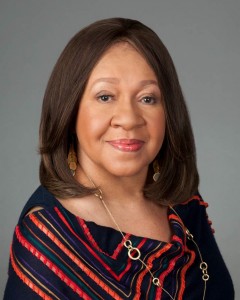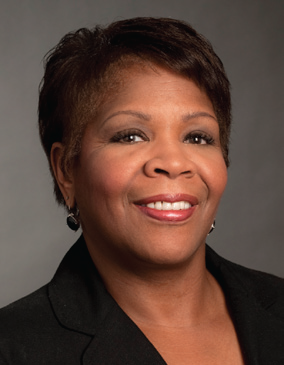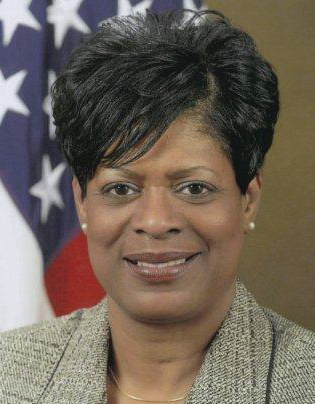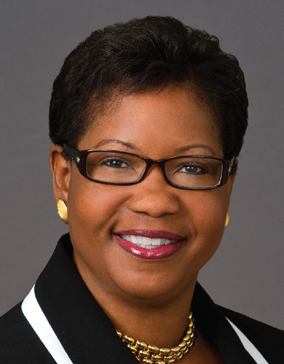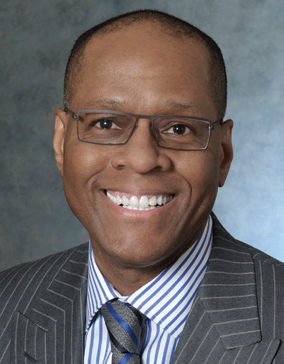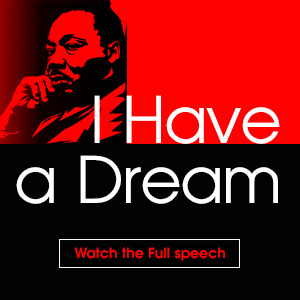By Sarah Symons, Activist, Composer, Musician, and Founder of Made By Survivors
Imagine you are a middle-class person living in 1850. At that time there were approximately two million slaves in the American South. They were bought and sold for an average of $40,000 in today’s money, a valuable commodity. Slaves were a core part of the U.S. economy. They had no control over their lives, labor, health, nutrition, sexuality, or the lives of their children.
How far would you have gone to free people from slavery? Would you have risked your life rescuing slaves on the Underground Railroad? Would you have defied social standards by becoming an abolitionist, speaking to unreceptive ears, marching at rallies, and writing letters? Would you have given your time, money, and energy to helping freed slaves survive? Or would you, like most people at that time, have accepted the status quo of slavery?
You do not have to imagine. Slavery is a larger problem today than it was in 1850, larger than at any time in human history. According to the UN, there are now over 30 million men, women, and children bought and sold on an international market. Members of minority communities are at much higher risk for being trafficked into slavery, both in the U.S. and internationally.
Just like in the past, slaves have no control over their lives, labor, health, nutrition, sexuality, or the lives of their children. More slaves than ever are women and children. Twenty-two percent of children trafficked into slavery do not survive to adulthood. Many that do are permanently disfigured or psychologically traumatized.
There are a few differences between historical slavery and modern day slavery:
- Slavery is no longer legal anywhere in the world. However, it is still rooted in economics—slavery thrives where people are impoverished and have no realistic economic alternatives.
- Slavery is a multibillion dollar industry and the second largest criminal enterprise in the world.
- Slave labor is cheaper than ever: you can buy an eighteen-year-old male field slave or an eleven-year-old virgin girl for $80 rather than $40,000. Today, there is little motivation to keep slaves healthy or alive, when you can replace them so cheaply and easily. Enslaved people have become disposable.
Some facts remain exactly the same as in the 1850 scenario: Slavery continues to thrive because we as a society are willing to tolerate it. Modern slavery thrives in darkness and shame. As soon as one brings awareness to it—through public awareness and action—it dies down.
So where do you start? It is first important to understand what modern slavery looks like:
- What are people enslaved for? People are enslaved for commercial sexual exploitation (brothels), forced labor, domestic work, child soldiering, and forced begging.
- Where are the slaves? There is slavery in every country in the world, and every state in the U.S. People of every race and class have been trafficked, but the vast majority of trafficked persons are the poor, ethnic minorities, marginalized people, women, and children. In America, kids of color are disproportionately victimized for forced prostitution.
- How are people trafficked? Some are sold by parents, neighbors, or relatives. Some are tricked while in search of jobs. Some enter into false marriages and loverboy schemes and are sold by their so-called husbands or boyfriends. A few are kidnapped outright.
- How are people freed? Victims are freed in raids by police, or by local or international agencies working with police, or through community outreach efforts. A few escape on their own, or are thrown out by their traffickers when they become sick or too old to be of use.
What can we do about slavery?
My organization, Made by Survivors, is fighting slavery through education, employment, and empowerment of survivors and people at high risk. We work in India, Thailand, Cambodia, Nepal, Uganda, and the United States. Our mission is to give survivors the tools to remain permanently free and to become community leaders who can prevent others from being exploited. We partner with local agencies and shelters all over the world to achieve these goals.
We train and employ survivors in well-paid, respected professions that place them well above the poverty line, and greatly improve their status in society. We use the funds from the sale products made by survivors in our program to build shelters, educate children freed from slavery (or born to parents in slavery), and to provide counseling, healthcare, and aftercare to survivors.
What can you do? You can give your time, perhaps by joining or starting a local task force. You can give your money, raise funds and awareness, spread the word individually, or buy a product (at www.MadebySurvivors.com) made by a trafficking survivor.
If you suspect someone you know may be a victim of trafficking, or at high risk, call the National Human Trafficking Hotline, 1-888-3737-888 to get help and advice.
Before you do anything else, you have to commit to fighting modern slavery, make it a priority in your life, and find the courage within yourself to make a difference.
I was drawn into this work, and ever since I have helped survivors of slavery, my life has been blessed miraculously, every week, year after year. Everything I thought I was giving up has been given back exponentially. When it seemed there was no money to continue the work, someone always appeared to carry us through to the next level.
The biggest miracle is the simplest—that lives seemingly so destroyed can be so restored, that survivors find the courage to go on living despite all they have suffered, and to make their lives a strong and beautiful example to us all.
In 2009, Symons was the recipient of the Count Me In Micro to Millions competition, the recipient of a Sam Walton Foundation award for women entrepreneurs, and was honored by the V-Day Foundation for her work preventing violence against women. She is the proud mother of two children and the spiritual mother to Anjali and Sunanda and scores of other survivors in Asia. Read more about Symons’ work and survivors in her new book, This is No Ordinary Joy, available on Amazon.com.
By Dr. Henrie M. Treadwell, Research Professor, Department of Community Health and Preventive Medicine and author of Stereotypes in Black and White: How everyday Leaders Can Build Healthier Opportunities for African American Boys and Men
Of the many injustices inherent in our system, one of the most frustrating is what happens when a prisoner tries to re-enter society and the workforce. Not only have the 650,000 released each year lost a significant number of their productive years to incarceration, but even after they have paid their debt to society discrimination forces them to pay and pay again. Myths abound regarding access to benefits, public housing, employer incentives, parental rights, Medicaid suspensions or terminations, and many other rights, including the right to be fairly considered and hired to do an honest job. These myths serve to marginalize and stigmatize.
In their search for honest employment, individuals face a myriad of obstacles. But understanding what they are—and what they are not—helps provide direction for solving the problem.
The issue is often incorrect information about the rights of former prisoners. For example, an employer might believe that people with criminal records are automatically barred from employment. In fact, an arrest or conviction will not automatically bar individuals from employment. In reality, states and localities have what some might find to be astonishing discretion in the way they apply policies, and can even opt out completely. In addition, employers may not be aware of various incentives for helping the formerly incarcerated. Many do not know that if they hire ex-felons they can save money on their federal income taxes in the form of a tax credit inventive, through the Work Opportunity Tax Credit program.
One in four American adults have an arrest or conviction that pops up during a routine criminal background check. And according to the Society for Human Resources Management, over 80 percent of U.S. employers perform such checks. As with so much relating to our criminal justice system, such a practice can and does overwhelmingly discriminate against African Americans. A case in point is the recent Pepsi Beverages policy of refusing to hire even those who had been merely arrested and were pending prosecution—even if they had never been convicted. Pepsi also refused to hire those convicted of even minor offenses. Such misuse of arrest and conviction records to deny employment can be found illegal when it is not relevant for the job. And indeed, Pepsi has agreed to pay millions in damages, provide job offers and training, and change its background check policy. BMW and Dollar General are also under scrutiny.
We must and can do better in preventing and mitigating this form of collateral damage. When employers say they hire on a case-by-case basis it generally means they don’t hire anyone who has been convicted of a crime, no matter how minor or irrelevant to the job.
As a step in the right direction, my team and I were part of a campaign in Georgia to have expungement legislation enacted. Expungement, or the process of sealing arrest and conviction records, recognizes that background checks are harmful.
However large a difference this can make in people’s lives, it is not enough. We need to “ban the box” from employment applications. Industry leaders need to be more active. There is ample opportunity for leadership in HR for CEOs to turn the corner on this issue that disproportionately affects African Americans. Employers and workforce development specialists can use the incentives and protections in place for hiring formerly convicted individuals. Prison, jail, probation, community corrections, and parole officers can ensure that formerly convicted individuals can access the appropriate federal benefits to help them become stabilized and established after release.
And remember this: African American men without criminal records are 3 percent less likely to be considered for employment than white men with criminal records even when their employment and criminal history are identical. We can stop this now!

With tight budget situations, the state of Illinois is currently looking at different ways to alter its budget, save money, and still provide suitable services to citizens, including those who have special educational needs. The state has not yet passed on any of these changes as it is still in the preliminary phases of altering next year’s budget, but it is important if you are the parent of a special needs child to look into the current planned adjustments and to educate yourself.
What is Changing
For several decades, there has been a set restriction on the overall size of classrooms dealing with special needs children. This has always been the case in order to ensure children with certain learning disabilities are able to receive the necessary assistance and care they need. However, with schools falling deeper and deeper into debt, they are not able to afford paying for these added teachers, and so they are looking at removing the restrictions of classroom size so more individuals who fall into the special educational category might end up in the same classroom.
This is also going to remove the restrictions on the number of disabled students in a traditional classroom, should the new budget regulations go into effect. This means a single teacher would have to help not only their traditionally sized classroom, but also several more students with special needs making it more difficult for the teachers to spend added time with everyone who needs it. This means the proposed changes would ultimately affect every student, not just those with disabilities, as every school in the public sector has multiple students who require additional assistance.
Effects
Who does this affect? Nearly everyone involved in the public school system. Given the nature of teaching special needs students, there is a time and energy commitment that teachers make to these students. It may prove difficult for students in the classroom to adjust to others getting more attention along with the natural curiosity that will take place as students interact with their new classmates. How will this affect each party? Will it help the children to learn more about diversity? Will it slow down the teaching process?
As of right now, the state of Illinois already has one of the worst records in the entire nation when it comes to providing special time for students who require it, and these changes would only make the situation that much worse. According to the United States Census, there are about 4.1 percent of children living in metro areas in Illinois (or 2,006,661) with a disability requiring special needs. The census also tells us that 85 to 89.3 percent of those children are enrolled in public school. If just 5 percent of those special needs children (or about 85,283 children) currently in Illinois Public schools were forced into mainstream classrooms we could see a huge change in the way those students develop (not to mention the change in the classroom environment). Currently, many of the rooms and teachers who work specifically with students who have disabilities facilitate around five students per teacher. This could possibly change all the way up to fifteen students per teacher, depending on the base of the students’ needs.
There are not many other adjustments looking to be made by the Illinois budget in the coming year, as this alone is going to save the state millions of dollars in teacher salary (each school is not going to require as many teachers who work with these students.) By laying off multiple teachers per district, this is going to add up in helping the state balance its budget and reduce spending, but it also may end up reducing the quality of education everyone in the school receives.
Brynna Baldauf is a Phoenix local with many years of professional child care and teaching methods in her past. She currently works for a small tech firm as a research assistant.
By Carolyn Clift, Senior Vice President and Chief Diversity Officer, HCSC
The first stage of diversity in the workplace, civil rights laws, focused on addressing historic discrimination to ensure equal treatment of women and minorities. The second stage, affirmative action, began as a strategy to recruit and hire more minorities in the workplace. The third stage, managing diversity, followed the evolution of equal opportunity and other nondiscrimination laws and regulations that increased workplace diversity. The fourth stage, Diversity and Inclusion (D&I) reflects the continuation of laws and regulations protecting the rights of persons with disabilities; veterans; immigrants; lesbian, gay, bisexual, and transgender persons; as well as shifts in demographics, economic, political, and social realities.
At Health Care Service Corporation, the workplace regulatory compliance department works on matters involving workplace laws and regulations, however, this department functions separately from D&I operations.
Enterprise Diversity and Inclusion Services (EDIS) is a distinct division responsible for fully integrating D&I into our business strategies and how we serve and interact with employees, members, providers, suppliers, and local communities.
D&I has been transformed from the “right thing to do”’ for regulatory compliance to good sound business practice for marketplace success. Developments in D&I practices are now driven by business opportunities—not legal requirements.
Clearly, the changes in human rights laws and regulations support the evolution of D&I in corporate America. HCSC, like many companies, however, no longer relies on legal obligations to design D&I initiatives. The focus on diverse talent recruitment, retention, and development, along with multicultural competencies and other workplace programs, is to leverage business outcomes and marketplace solutions.
By Phyllis Brantley, Chief, Diversity, National Guard Bureau
NEARLY HALF a century ago, executive orders were issued to address affirmative action in federal agencies and mandate Special Emphasis Programs Groups to proactively promote a diversified workforce. Most recently, President Obama’s Executive Order 13583 set the stage for further progress in the field of diversity.
For well over a decade, the National Guard, an employer for both military and civilians, promoted diversity as essential to mission readiness. With the passing of the National Defense Authorization Act (NDAA) 13, coupled with the Military Leadership Diversity Commission (MLDC) recommendations, the National Guard has a stronger foundation to promote diversity initiatives that impact its policies and programs.
Our diversity initiatives begin with senior leadership engagement nationally through three major initiatives: the Joint Diversity Executive Council (JDEC), State Diversity Councils, and the Field Engagement Program. Senior leaders from the JDEC provide recommendations to help leverage the National Guard’s diverse workforce, sustain a workforce climate of equity, and foster an environment where individuals have the opportunity to prosper and effectively advance their careers. A short while ago, the JDEC approved strategies that effect change in policies to promote inclusive hiring and promotion opportunities.
We have also established State Diversity Councils within each state and territory that are responsible for developing and executing state charters and strategic plans. In addition, the implementation of our Field Engagement program, chaired by General Officers, helps facilitate diversity and inclusion communication from the bottom up.
As we continue stressing the importance of an inclusive workforce, it is time for a systematic application of diversity concepts to the business of our organization, viewing diversity as something more than a moral imperative or a business necessity—but as an opportunity. We see this as fully utilizing our most precious resource—our people. Aligning diversity with the mission and business of the organization increases employee satisfaction and retention, improves competitiveness and productivity, and adds value to the sustainment of our National Guard.
By Richard E. Meade, Vice President and Chief Legal Officer – International, Prudential Financial, Inc.
Prudential General Counsel Susan Blount has created a culture within the Law, Compliance, Business Ethics & External Affairs Department (LCBE) that makes commitment to diversity and inclusion in our department and in the legal profession a core value.
LCBE actively works with and supports local and national diverse bar associations, provides a talent pipeline to create opportunities for diverse students and recent law school graduates, nurtures an inclusive atmosphere within LCBE through our Diversity Council, and our expenditures on outside law firms are tied to diversity goals. I have had the privilege to help design and lead this array of programs for our Department since 2006.
Prudential is a founding member of the Inclusion Initiative, a collaborative effort by corporate law departments at Fortune 500 companies representing a wide crosssection of industries. Participating companies commit to multimillion dollar annual goals for legal spend with minority- and women-owned law firms. In the first three years of the program, the participating companies have spent over $330 million on minority and women owned law firms.
Each year, our Department hires a large class of diverse first-year law students into a summer intern program. The program provides them with attorney mentors, relevant training, and work experience involving various legal specialties, and mock interviews. These students come from the Minority Student Program at Rutgers University School of Law, the diversity program managed by the Bar Association of the City of New York, the ABA Commission on Disabilities, and many of the diverse bar associations with which we work. In addition, after the economic downturn in 2008 reduced the number of jobs available for qualified new law school graduates, we launched the Prudential Law Fellows Program to provide eighteen-month fellowships to recent law school graduates from diverse backgrounds.
By Gregory B. Jordan, Global Managing Partner, Reed Smith LLP
LEGISLATION IN THE past fifty years, including Title VII of the Civil Rights Act of 1964, the Americans With Disabilities Act of 1990, and the Lilly Ledbetter Fair Pay Act of 2009, support workplace diversity. These legislative prohibitions on employment discrimination on the basis of race, color, religion, sex, national origin, ability status, and gender foster workplace climates in which diversity can thrive, but they do not require workplaces to become more diverse. Nondiscrimination as the law of the land is a first step, but the journey to diversity within a law firm or the profession is significantly longer.
Absent a legislative mandate, it is the responsibility of employers to create employment policies and strategies that effectively recruit, promote, and retain diverse employees in all positions. Although the legislative requirements for employment diversity are weak, the business case is strong.
In thirteen years at the helm of Reed Smith, I have encouraged the design and implementation of numerous initiatives that have transformed our firm into a significantly more diverse organization. I count participating in the formation of the Leadership Council on Legal Diversity as a major contribution. LCLD focuses on uniting the legal industry’s senior leaders in law firms and corporations into one organization to resolve the enormous diversity challenges of the legal profession.
Other contributions launched during my tenure include: CareeRS, which delivers tools and mentoring to all attorneys that have been particularly beneficial for diverse attorneys’ career trajectories; the Women’s Initiative Network (WINRS), which promotes gender diversity and women’s work/life balance; minority scholarships, which identify and support diverse law students; and LGBT employment outreach and supports.
Diversity is a core commitment of Reed Smith. The firm and I are dedicated to leading the profession toward achieving a diverse and inclusive workforce.
By Regina Speed-Bost, Partner, Schiff Hardin, LLP
ALTHOUGH THE AMERICAN legal system has directly addressed the barriers that exist for diverse workers, sadly the legal profession has been slow to adopt the very changes that laws we help shape are intended to bring. Yet, as with any profession, time and circumstance have changed the practice of law to recognize the untapped treasure of diverse attorneys. The most significant change has been in the dialogue that exists around diversity. It is refreshing that it is no longer taboo to discuss within corporations, law firms, and government the impact that policy changes and rules implementation will have on diverse communities. Rather than presume no impact or ignore when policies, rules, or regulations may unexpectedly affect one segment of the workforce, diversity is now part of the analysis.
Recognizing that opportunity is the starting point for success, many organizations have developed mechanisms to maximize the opportunities for the diverse members of their workforce. I have personally served on and as chairperson or cochairperson on several diversity committees, including the diversity committee of a bar association, each of which have focused on ways to increase leadership opportunities within those organizations. Corporations have executive and leadership training programs, many of which target diverse populations. In the private practice of law, firms are regularly asked to respond to client inquiries and requirements concerning the diversity within the firm and on the client’s respective service team. Clients repeatedly voice they want to know who is working on their matters, who is receiving the financial benefit of their matters, and that diverse attorneys have the opportunity to do both. To ensure that Schiff Hardin is presenting its best team in all instances, our managing partner now evaluates every new proposal to service a client in terms of subject matter expertise, diversity, and experience.
In the future, reasonable metrics and success measures are needed to track progress. Organizations will need to work to ensure that the initiatives undertaken thus far continue and their level of success is determined. Here, too, the dialogue about diversity and inclusion must continue to ensure that future policies, rules, or regulations do not affect one segment of the workforce to a larger degree or more negatively
than another.
By Lecia Johnson, Shareholder, Godfrey & Kahn, SC
In recent years, laws have been clarified and expanded to reflect the evolving family structures of employees. For example, the U.S. Department of Labor (DOL) has issued an Administrator’s Interpretation under the Family and Medical Leave Act (FMLA) which clarifies that family leave is available not only to biological parents, but other individuals, such as grandparents that serve as caregivers to their grandchildren. In addition, the DOL has clarified that family leave is available for adult children suffering from mental or physical disabilities. Some states have also implemented changes to their laws providing for access to medical benefits to domestic partners.
These recent changes support diversity in the workplace and have generally resulted in positive results for all employees who may benefit from the expansion and clarifications of these laws.
At Godfrey & Kahn, our firm has worked to design policies and practices that allows our employees to benefit from family leave and medical benefits in a manner that accommodates their modern family structures, all while maintaining their presence and positions within our organization. Through our firm’s Women’s Leadership Forum (WLF), we have continued to monitor new and effective ways to allow our employees to benefit from our leave policies. Our firm has gone beyond the FMLA requirements and allows for paid leave for its attorneys even when FMLA does not require such leave to be paid. In addition, we have adopted a “ramp down/ramp up” policy for attorney associates to address billable hour concerns when attorneys take advantage of our family leave policies. Our medical benefits policies are accessible by domestic partner and adult children of our employees. We believe that these policies and practices enhance our firm’s ability to create an appealing work environment to both maintain and attract a diverse group of employees.
By William J. Snipes, Partner, Sullivan & Cromwell LLP
THE COMMITMENT OF our clients to principles of diversity and inclusion has been instrumental in helping to change the status quo. For more than a decade, there has been a growing trend in the number of clients proactively seeking to ensure that a diverse mix of lawyers are assigned to their matters, including, for example, requiring law firms to periodically report detailed information about their efforts to recruit, retain, and advance women and diverse lawyers.
In more recent years, our clients have started rewarding external lawyers for achieving diversity milestones by instituting varying levels of “preferred provider” status and publicly honoring law firms at annual diversity events. We have also been a leader in collaborating with clients on diversity initiatives, including programming, panel discussions, and networking and awareness receptions.
We have been proactive in demonstrating our commitment to diversity and providing opportunities for our lawyers and clients to participate in advancing our diversity objectives. In the past year, our Diversity Committee has hosted and cohosted numerous diversity events with clients. For example, we hosted a screening of Trevor, a seventeen-minute, Academy Award-winning short film that inspired its creators to establish The Trevor Project, an organization that provides crisis intervention and suicide prevention services, which many of our largest clients attended. We also hosted a presentation created by a client called The Good Black, which was attended by members of our Network of Black & Latino Lawyers. The firm’s Women’s Initiative Committee annually cohosts with a client a reception launching a week-long clothing drive to benefit Dress for Success. This collaboration is key to making real progress on having a more diverse and inclusive legal profession.

